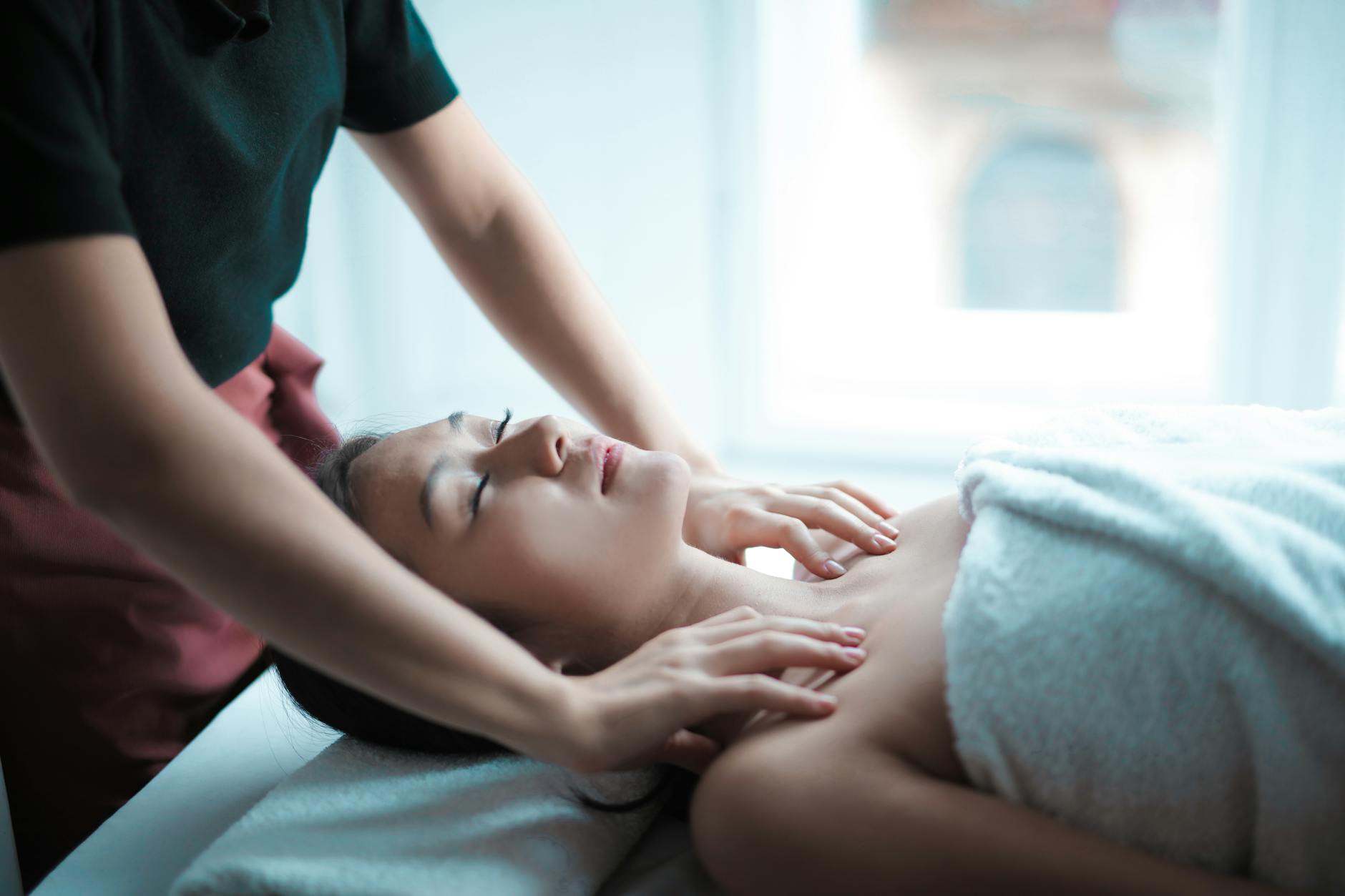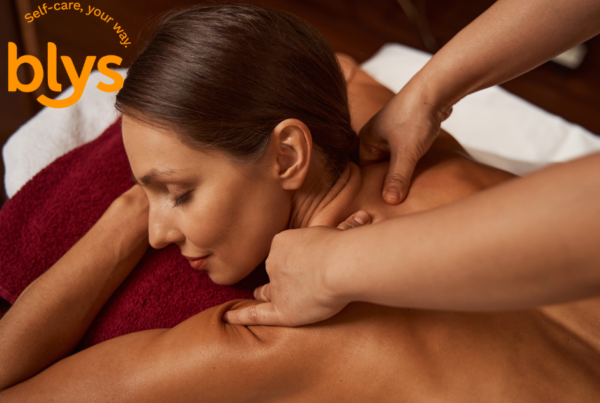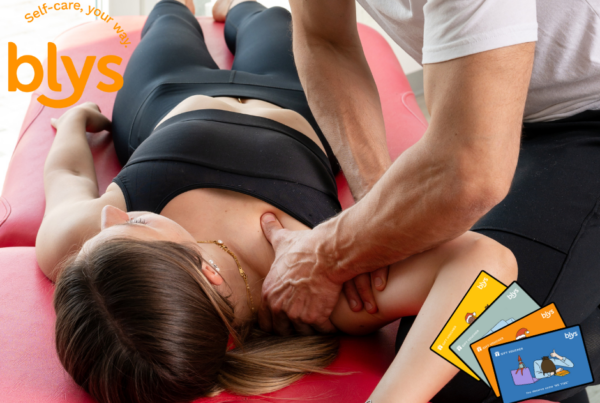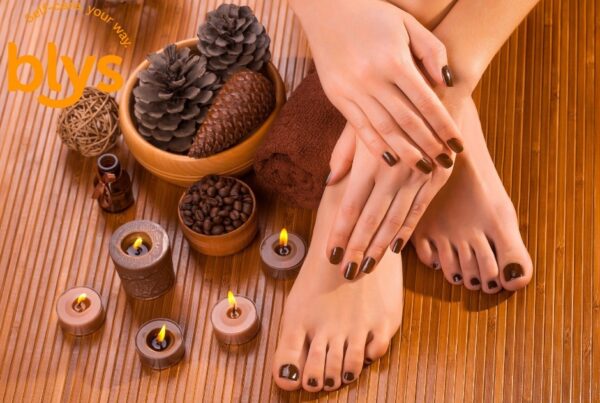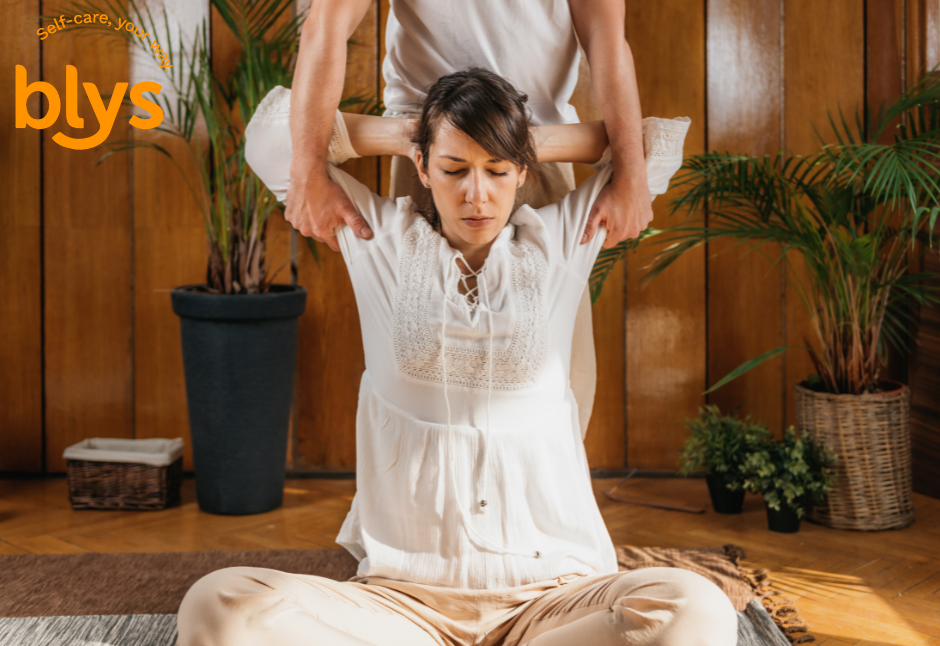
More people in the US are now combining massage and physical therapy as part of their wellness routines and with good reason. These two practices complement each other perfectly, offering benefits that go beyond simply easing stiff muscles or recovering from injury.
Together, they help improve mobility, speed up recovery, reduce stress, and create a deeper sense of relaxation. For anyone juggling the demands of work, family, and personal wellbeing, this pairing is one of the most effective ways to stay balanced.
Massage and physical therapy share the same overall goal: to restore comfort, keep joints moving smoothly, and calm the nervous system. Physical therapy strengthens and retrains muscles, while massage targets tension, improves circulation, and reduces stress.
When combined, they create a powerful, holistic approach that supports both physical performance and mental health.
With Blys’ mobile physical therapy, you can make this routine part of your weekly schedule without leaving your home. A professional, vetted therapist brings expert care directly to your door, allowing you to pair structured therapy with massage in a way that feels safe, convenient, and personalized.
Why Massage and Physical Therapy Work Well Together
At first glance, massage and physical therapy might seem like separate treatments. In reality, they work on the same systems of the body in complementary ways.
- Physical therapy focuses on mobility, posture, and function. It retrains muscles, strengthens weak areas, and corrects imbalances.
- Massage therapy works on the soft tissues to release knots, reduce stiffness, and improve blood flow.
Research shows that massage can increase range of motion and reduce pain in people with musculoskeletal conditions . Physical therapy, on the other hand, provides long-term improvements in strength and mobility .
When used together, the results compound: massage prepares the body by loosening tissues, and physical therapy reinforces those improvements through movement training and rehabilitation.
This combined approach leads to:
- Quicker recovery after workouts, injuries, or desk-related stiffness.
- Better posture and movement control.
- Reduced stress and enhanced relaxation.
By weaving massage into a physical therapy plan, you not only feel better in the moment but also set the foundation for long-term mobility and injury prevention.
Myofascial Release and Physical Therapy
One of the most important benefits of combining massage and physical therapy is their impact on fascia the connective tissue that surrounds muscles and joints. Tight fascia can restrict mobility, create discomfort, and slow recovery.
- Massage: Techniques like myofascial release apply sustained pressure to soften fascia and restore smooth motion.
- Physical therapy: Uses targeted stretches and corrective exercises to lengthen and retrain fascia over time.
Examples of effective pairings include:
- Hamstring rehab + deep tissue massage: Builds leg strength while addressing knots.
- Hip stabilisation + trigger point release: Opens tight hips and eases pressure on the lower back.
- Spinal mobility drills + gentle compression massage: Improves rotation and reduces stiffness.
Self-care can help too. Foam rollers, massage balls, and tennis balls can mimic fascia release at home:
- Roll the arches before balance or stability exercises.
- Loosen hamstrings after sitting long hours.
- Ease the upper back before spinal rehab drills.
Still, nothing replaces the hands-on expertize of a trained professional. A Blys therapist can personalize massage and physical therapy techniques to meet your recovery and mobility needs.
For more ways massage supports overall wellness, explore our guide on massage for strengthening the immune system.
Massage to Support Physical Therapy Outcomes
Massage supports physical therapy by preparing the body for movement, easing tension, and boosting circulation. Softer, more flexible muscles make exercises safer and more effective, allowing patients to move more freely and avoid setbacks.
Key massage techniques often paired with therapy include:
- Effleurage: Gentle strokes to warm tissues and stimulate blood flow.
- Deep tissue massage: Firm pressure to release tightness in large muscle groups.
- Assisted stretching: PNF or Thai-inspired techniques to safely extend flexibility.
Used alongside physical therapy, these methods help speed progress, reduce discomfort, and make sessions more rewarding. Patients often notice smoother movement and improved recovery when both approaches are combined.
Studies from the National Institutes of Health highlight that massage can reduce pain and enhance function in musculoskeletal conditions, reinforcing its role as a valuable complement to physiotherapy.
Recovery Massage After Physical Therapy
Soreness after a physical therapy session is common, especially when focusing on stretching, strengthening, or repetitive drills. Massage helps speed recovery by boosting circulation, reducing inflammation, and calming the nervous system.
Effective recovery massage techniques include:
- Lymphatic drainage: Encourages fluid movement and reduces swelling.
- Swedish massage: Long strokes that relax the body and lower stress hormones.
- Myofascial release: Frees up tight fascia that exercises alone may not address.
Together, these methods create a balance between active recovery through therapy and passive recovery through massage. This combination helps muscles stay strong, flexible, and less prone to injury, while also easing the mental strain of rehabilitation.
Studies show that massage can reduce delayed onset muscle soreness (DOMS) and support faster recovery, making it a valuable complement to physical therapy.
DIY Pairings: Massage and Physical Therapy at Home
You don’t always need a clinic or professional setup to feel the benefits of combining massage and physical therapy. With a few simple tools and mindful techniques, you can start improving mobility, reducing tension, and preparing your body for exercises right from the comfort of home.
These small steps are especially useful between therapy appointments, helping you maintain progress and prevent stiffness from building up.
Practical pairings to try include:
- Neck release before posture training: Apply gentle fingertip pressure at the base of the skull before chin tucks or mobility drills to relax tight neck muscles.
- Foot massage before balance work: Roll a tennis ball under your arches to stimulate circulation and prep the muscles of the lower body.
- Foam rolling the back before core exercises: Loosen tissues along the spine so you can engage core muscles more effectively and with less strain.
When practising at home, the key is to keep movements slow, use light to moderate pressure, and never push into pain. These routines can act as valuable “maintenance care,” but professional guidance ensures you’re doing them safely and effectively.
A Blys therapist can design a tailored plan that combines hands-on massage with physical therapy strategies, helping you progress with confidence.
Tips for Getting the Best Results
Massage and physical therapy deliver the greatest benefits when practized consistently. While one-off sessions can feel good in the moment, steady routines are what create lasting changes in mobility, recovery, and overall wellbeing.
Five simple ways to maximize results include:
- Stay hydrated: Water supports circulation and helps tissues repair.
- Pair with breathwork: Deep breathing calms the nervous system, making massage and therapy more effective.
- Progress slowly: Avoid pushing into pain; allow your body to adapt gradually.
- Stick to a schedule: Weekly therapy or massage, combined with daily mobility work, helps maintain improvements.
- Listen to your body: Adjust when you notice tightness, discomfort, or fatigue.
Consistency and awareness are key. Even small daily habits can build momentum, and with professional guidance from Blys, you can turn these tips into a sustainable routine that keeps you moving well for the long term.
Looking for a thoughtful present? Discover how to create the perfect massage voucher gift package with Blys.
Who Benefits Most from Massage and Physical Therapy
This combined approach suits almost everyone, but it can be especially transformative for:
- Athletes: Faster recovery, better performance, and reduced risk of injuries.
- Desk workers: Relief from neck, back, and shoulder strain.
- Parents and professionals: Convenient stress release that fits tight schedules.
- Older adults: Improved mobility, balance, and fall prevention.
Because Blys offers nationwide in-home physical therapy and massage, you can access care wherever you are from Alabama to Georgia or regional towns. No need to waste time travelling to clinics.
Getting Started with Blys
Adding massage to your physical therapy plan is simple with Blys’ mobile physical therapy:
- Visit the website or app.
- Choose your service and preferred schedule.
- A vetted professional arrives at your home with everything required.
Sessions are fully personalized, combining therapeutic exercise with massage to support your recovery and mobility goals.
Wrapping Up
Massage and physical therapy are effective on their own, but together they provide a more complete approach to mobility, recovery, and overall wellbeing. Physical therapy strengthens and retrains the body, while massage reduces stress, eases stiffness, and prepares you for deeper movement.
This pairing supports everything from athletic performance to everyday desk comfort. With Blys, there’s no need to travel or rearrange your day. Professional therapists bring expert care straight to your home, making it easier than ever to invest in your health.
Book your in-home session today with Blys’ mobile physical therapy and take the first step toward better recovery, improved mobility, and lasting balance.


